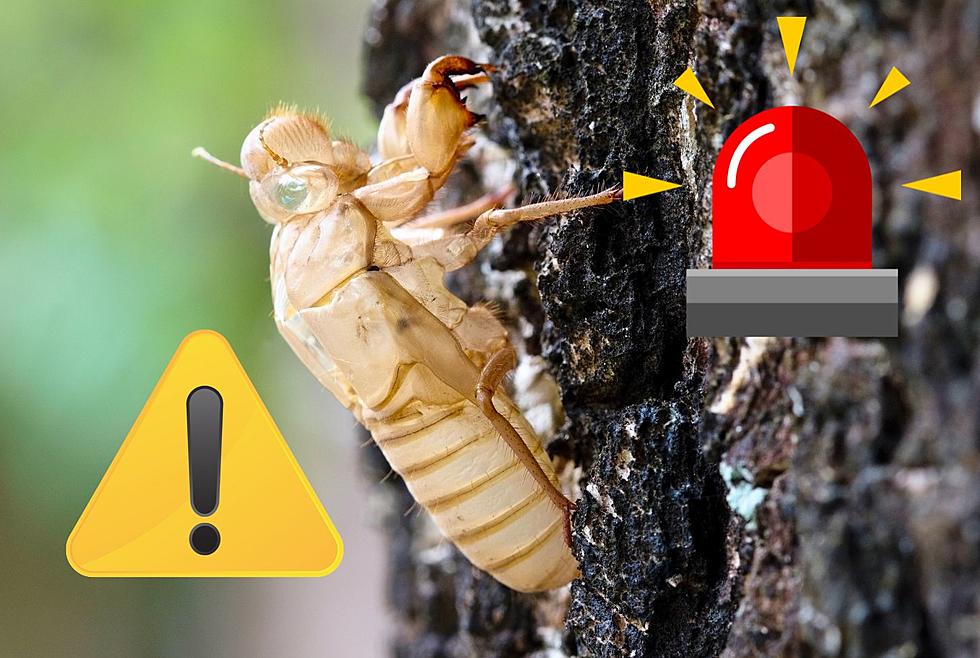
This Year Could Be The Worst For Cicadas In Tennessee
In a few months, an extraordinary phenomenon will occur in the United States that hasn't happened since the time of President Thomas Jefferson and won't repeat until 2245. It's the emergence of billions of cicadas from underground, creating an extraordinary spectacle known as cicadapocalypse.
Wait... What Is Happening?
This spring, two separate broods of cicadas, which surface every 13 and 17 years respectively, are expected to emerge at the same time. The 13-year group, referred to as Brood XIX or the Great Southern Brood, is the largest periodic cicada brood and it's located across the southeastern United States. The Northern Illinois Brood, or Brood XIII, surfaces every 17 years.
Dr. Jonathan Larson, an extension entomologist and assistant professor at the University of Kentucky, said that such a large double brood emergence is exceptional. It's an unusual event in nature involving one of the most fascinating insects in America, he said.
Although the term cicadapocalypse may sound ominous, experts believe that the two broods won't emerge significantly in the same areas, and these noisy and plentiful bugs are harmless. Here is what you should know in preparation for the cicada season.
What To Know About Cicada Broods
The Magicicada, a group of cicadas found in the eastern US, are unique due to their emergence cycles. There are three species that come out every 17 years, and four species that have a 13-year cycle. While the reason for these specific numbers is still disputed, some researchers speculate that the use of prime numbers in their cycles helps them avoid predators with 2 or 3-year life spans.
These periodic cicadas are not the same as annual cicadas, despite their name suggesting they emerge every year. The nymphs, or offspring, of annual cicadas, remain underground for two to five years as they grow. However, due to the number of generations overlapping, there appears to be a continuous stream of these cicadas each summer.
Differentiating between the two types is fairly simple. Annual cicadas usually appear later in the year, towards August, while the periodical cicadas show up in the spring. Furthermore, many species of annual cicadas are large and greenish in color, whereas periodical cicadas are smaller, predominantly black, and feature striking red eyes and orange-hued wings and legs.
Cicadas are grouped into broods based on when they surface. Broods can be a mix of different species, as long as the cicadas are part of the same 13- or 17-year cycle and reach adulthood at the same time.
When And Where Will The Cicadas Emerge?
This spring's periodic cicadas will surface once the soil temperature reaches 64 degrees Fahrenheit at a depth of 8 inches, expected around mid-May. Though each individual cicada only lives for a few weeks as an adult, the overall emergence will span six weeks due to a staggered appearance. This time will be filled with mating calls, breeding, and then the cicadas' death.
Various areas of the Midwest and Southeast US will see cicadas this spring. Brood XIII is expected in Northern Illinois, Southern Wisconsin, Eastern Iowa, and Northwest Indiana, while Brood XIX is predicted for central and southern Illinois, Missouri, and scattered locations across Kentucky, Tennessee, Virginia, Maryland, North Carolina, South Carolina, Georgia, Alabama, Mississippi, Louisiana, and Arkansas. Some parts of central Illinois may experience overlapping of the two broods, though experts are uncertain.
Brood XIII is shown by blue dots, and Brood XIX is shown with red dots.
(Map On Cicada Safari)
The simultaneous emergence of Broods XIX and XIII is unusual, with a frequency of once every 221 years due to their 13 and 17-year cycles. They last appeared together in 1803, and won't reappear together until 2245. However, the simultaneous emergence of different broods elsewhere in the US is not as uncommon. This last occurred in 2015 and is expected again in 2037.
Preparing For Cicadas
Preparing for a Cicada emergence can be daunting, as an influx of these insects in a region could result in trees and shrubs being heavily adorned with their exoskeletons, and the loud noise of their calls can be overwhelming. Cicadas are mostly found in forested areas close to water sources, and despite their large numbers and the racket they create, they are harmless creatures, says Larson.
Although cicadas don't harm garden plants, they may inflict damage on young trees when laying eggs, which they do by cutting into the branches. Using cicada nets to cover trees can mitigate this potential issue. Cicadas are safe for pets as they do not bite or sting, and are edible for humans as well, with Larson describing them as having a sweet, nutty flavor.
Those living in areas affected by a Cicada emergence are encouraged to use the Cicada Safari app, which is a community science tool assisting researchers studying these insects. By simply photographing the cicadas they encounter and submitting them through the app, citizens contribute valuable data for scientists working to understand the impacts of climate change on cicadas and their predictive behavior.
While cicada season can be noisy and intrusive, Larson urges people to appreciate the spectacle as a unique opportunity to witness one of nature's most unusual events. He encourages us to celebrate it for what it is - a unique natural phenomenon that isn't seen anywhere else. He goes as far as describing it as beautiful.

LOOK: 20 of the biggest insects in the world
Gallery Credit: Andrea Vale
LOOK: 20 of the biggest insects in the world
Gallery Credit: Andrea Vale


